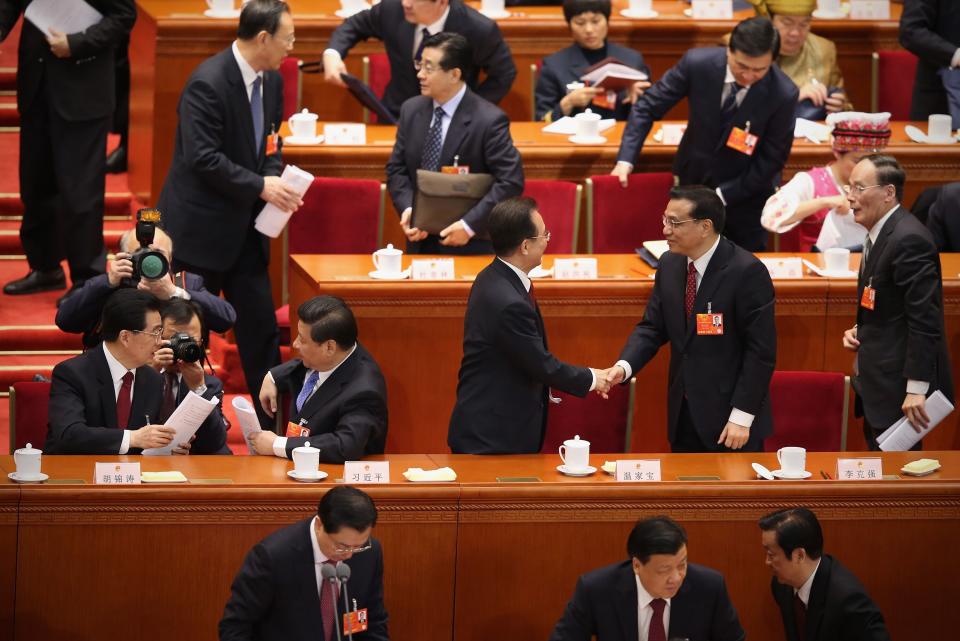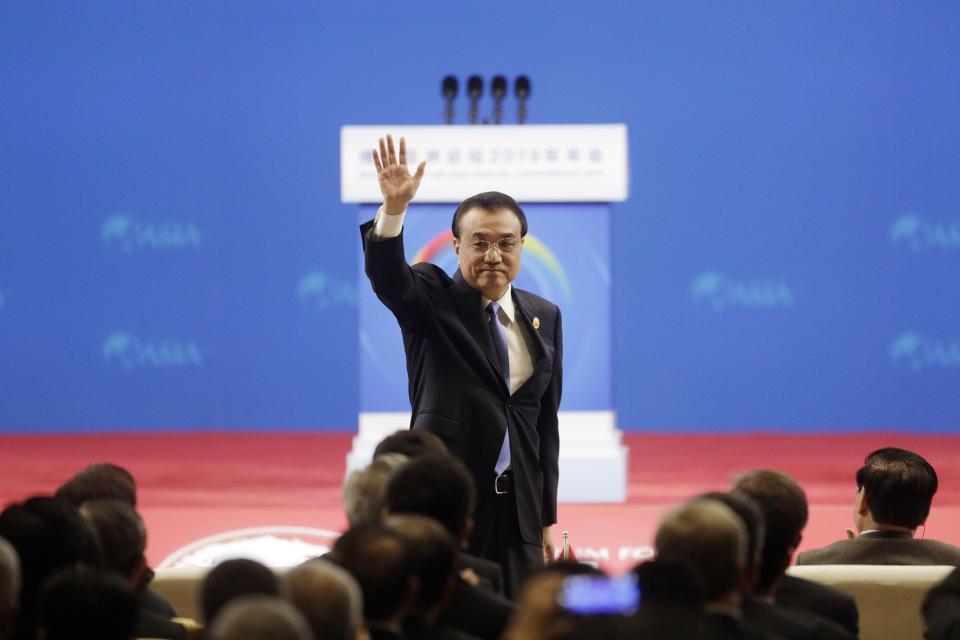In Photos: A Look Back at the Rise and Fall of Li Keqiang’s Political Career
- Oops!Something went wrong.Please try again later.
- Oops!Something went wrong.Please try again later.
- Oops!Something went wrong.Please try again later.
(Bloomberg) -- Li Keqiang’s sudden death at 68, just months after stepping down as premier, has led to an outpouring of grief on Chinese social media.
Most Read from Bloomberg
Canada Plans College Crackdown Amid Foreign Student Troubles
GM Hit With More Strikes While Stellantis Reaches Deal With UAW
How This Israel-Hamas Conflict Is Like Nothing That’s Happened Before
For a decade, Li served as China’s second-most powerful man. He became the country’s first premier with an economics doctorate after losing out on the top job to President Xi Jinping, steering the world’s No. 2 economy with his liberal economic vision. His career in politics came to an end in March, when Xi replaced him with a key ally, Li Qiang, as part of a leadership shakeup.
A rising star in the Communist Party, Li saw strong support from party elders. But his influence diminished as the role of premiership lost power in both political stature and direct authority, as Xi cemented his power and took greater oversight of the economy. Here’s a look back at the key moments in his political career.
A member of the Communist Youth League, Li was a top lieutenant of former Premier Wen Jiabao and seen as a protege of former President Hu Jintao. During the Cultural Revolution, Li was sent to work in the countryside of Anhui province, where he was born, spending several years doing manual labor while becoming his unit’s party branch secretary.
He served as as party chief in the provinces of Henan and Liaoning. His tenure in Henan was marked by both strong growth and a scandal over tainted blood donations that resulted in an HIV outbreak among the province’s rural residents.
In Liaoning, the policy wonk would become known for his use of high-frequency indicators, such as electricity consumption, rail cargo volume and bank loans, as proxies for growth. The Economist subsequently created the Li Keqiang Index to measure China’s economic growth.
After losing out to Xi in 2012 for the chance to rule the Communist Party, Li built a policy platform based on cutting red tape and taxes on business. At the following year’s National People’s Congress, he pledged to reduce the state’s powers, remarking “the hand that was wrongly installed on the government shall be replaced by the hand of the market.” Earlier in his tenure, he cracked down on extravagant spending to rein in an economy dependent on investment, and his policies were dubbed “Likonomics” by economists.
Li oversaw the economy during the pandemic, frequently urging local officials to balance Covid controls with economic growth. The message seemed to run counter to Xi’s Covid Zero policy, leading to speculation of a rift between the two leaders.
With a reputation as a man of the people, Li was lauded on Chinese social media after a visit to flood-stricken Chongqing. Images spread online showing him standing in mud and checking on crops. Another pillar of his economic policy that resonated with people was closing the country’s wealth gap.
At his final press conference after the National People's Congress in 2022, Li vowed to press ahead with reform and opening. “I would like to unequivocally tell you that China will unswervingly expand opening-up no matter how the international situation changes, just like how the Yangtze River and the Yellow River will not flow backwards.” He repeated the analogy again when he visited Shenzhen five months later, the tech hub seen as the symbol of China's reform and opening up.
--With assistance from Xiao Zibang.
Most Read from Bloomberg Businessweek
Sam Bankman-Fried Takes Stand in Reminder of Crypto’s Epic Fall
X, One Year Later: How Elon Musk Made a Mess of Twitter’s Business
The Business of Children’s Books in This New Era of Book Banning
A Complicated Billionaire Shoots for the Moon on The Businessweek Show
©2023 Bloomberg L.P.





